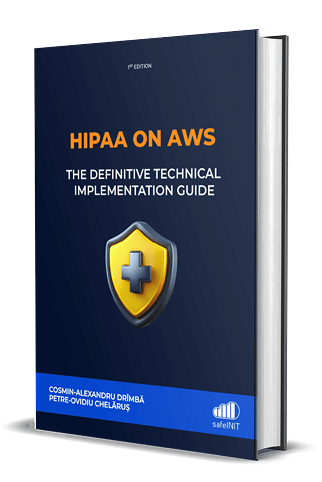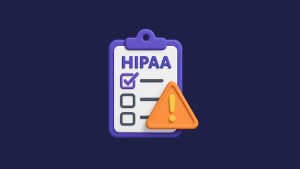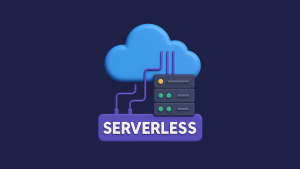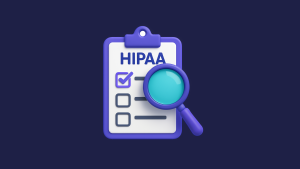How to become HIPAA compliant in the cloud is a challenge that requires strict security controls, risk management, and regulatory oversight. For healthcare organizations and SaaS providers handling Protected Health Information (PHI), ensuring compliance in AWS means following HIPAA’s Security and Privacy Rules while properly configuring cloud services.
This guide outlines a step-by-step process for achieving HIPAA compliance in AWS, covering security configurations, breach response planning, and compliance audits to help organizations build a secure, compliant cloud environment.
What you'll learn in this guide
• Essential HIPAA compliance steps for AWS environments
• Practical AWS service configurations
• Security safeguards and monitoring setup
• Breach response and audit guidance
What is HIPAA compliance and why does it matter?
HIPAA (Health Insurance Portability and Accountability Act) establishes security and privacy rules for handling Protected Health Information (PHI). Any organization storing or processing PHI must comply to prevent breaches, legal penalties, and reputational damage.
In the AWS cloud, HIPAA compliance means using HIPAA-eligible services, enforcing strict security controls, and signing a Business Associate Agreement (BAA). However, compliance isn’t automatic – organizations must properly configure and continuously monitor their AWS environment.
Key Definition
Protected Health Information (PHI) includes any health data that can identify an individual – from medical records to payment information to even appointment dates.

Get the complete implementation guide
Download our comprehensive HIPAA Compliance Guide with detailed AWS configurations, security checklists, and step-by-step implementation instructions.
HIPAA compliance challenges in the cloud
Migrating to the cloud introduces new security and compliance challenges for HIPAA-regulated organizations. The biggest risks include misconfigured access controls, insufficient encryption, and a lack of real-time security monitoring.
Additionally, HIPAA requires ongoing compliance audits and breach response plans, which many organizations overlook. In AWS, shared responsibility means customers must properly secure their cloud workloads, restrict access to PHI, and continuously monitor for threats.
Common Cloud Compliance Gaps
• Misconfigured access controls
• Insufficient encryption
• Missing audit logging
• Lack of breach response plans
• Inadequate security monitoring
Steps to become HIPAA compliant in AWS
Becoming HIPAA compliant in AWS requires a structured approach, from choosing the right cloud provider to implementing security safeguards and conducting regular audits.
Below is a step-by-step guide to ensure compliance while securing Protected Health Information (PHI) in the cloud.
Step 1. Choosing a HIPAA-eligible cloud provider
Not all cloud providers support HIPAA compliance, but AWS offers HIPAA-eligible services, advanced security tools, and a Business Associate Agreement (BAA) to help organizations meet regulatory requirements.
AWS enables HIPAA compliance by providing:
- HIPAA-eligible services like S3, RDS, Lambda, and DynamoDB to securely store and process PHI
- Built-in security features including encryption, identity and access controls, and compliance monitoring
- A strong compliance track record, with third-party certifications (SOC 2, ISO 27001, HITRUST) that align with HIPAA requirements
Important Note
Companies must still properly configure AWS services to ensure compliance,
which brings us to the next step.
Step 2. Implementing HIPAA security & privacy safeguards in AWS
HIPAA requires organizations to enforce technical, administrative, and physical safeguards to protect PHI. In AWS, this includes access controls, encryption, and monitoring & logging.
These safeguards help ensure that AWS environments meet HIPAA’s security and privacy requirements.
- Administrative Safeguards - Access controls, staff training, and assigned security responsibilities
- Technical Safeguards - Encryption at rest and in transit, access controls, and audit logging
- Physical Safeguards - AWS data center security, workstation controls, and media controls
Security First Approach
Proper implementation of these safeguards is critical for HIPAA compliance and serves as the foundation for all subsequent AWS configurations.
Step 3. Configuring AWS services for HIPAA compliance
AWS provides HIPAA-eligible services, but compliance depends on how they are configured. Organizations that handle Protected Health Information (PHI) must ensure that all AWS services are properly secured and monitored.
Key configurations include:
-
Amazon S3
Enable S3 Block Public Access, use server-side encryption (SSE-S3 or SSE-KMS), and apply least-privilege IAM policies to protect PHI -
Amazon RDS & DynamoDB
Encrypt database storage with AWS KMS, restrict access using security groups, and enable automated backups for compliance -
AWS Lambda & API Gateway
Ensure Lambda functions handling PHI run inside a VPC, encrypt environment variables, and avoid unnecessary data persistence -
AWS Security Tools
Use AWS IAM for access controls, AWS KMS for encryption, and AWS CloudTrail for audit logging
Step 4. Establishing a breach response plan in AWS
HIPAA requires organizations to have a breach notification process in case of unauthorized access to PHI. AWS provides security tools to detect, investigate, and respond to potential breaches.
A HIPAA-compliant incident response plan in AWS should include:
- Real-time threat detection with AWS GuardDuty and AWS Security Hub to identify suspicious activity
- Automated alerts & logging using AWS CloudTrail and Amazon SNS to track security events
- Predefined remediation workflows with AWS Lambda and AWS Systems Manager to isolate and mitigate threats quickly
Breach Notification Rule
Having a clear breach response strategy helps organizations meet HIPAA's Breach Notification Rule while minimizing security incidents.
Step 5. Training employees and conducting regular compliance audits
HIPAA compliance is an ongoing process, not a one-time setup. Organizations must regularly audit their AWS environment to detect security gaps and ensure compliance with HIPAA’s Security Rule.
A successful HIPAA compliance strategy should include:
- Routine security audits using AWS Config and AWS Audit Manager to identify misconfigurations
- Continuous monitoring with AWS Security Hub and GuardDuty to detect unauthorized access or potential breaches
- Employee training programs to educate staff on handling PHI securely, avoiding phishing attacks, and following HIPAA policies
Continuous Compliance
By conducting regular audits and training, businesses can prevent security risks, maintain compliance, and respond proactively to threats.
Conclusion
Becoming HIPAA compliant in AWS requires more than just using HIPAA-eligible services. It demands strong security configurations, continuous monitoring, and a proactive compliance strategy.
Organizations must enforce strict access controls, encrypt PHI, and conduct regular security audits to ensure ongoing compliance.
And with the right expertise, they can simplify compliance and reduce security risks without added complexity.
FAQ about becoming HIPAA compliant
What are the first steps to becoming HIPAA compliant?
Start by conducting a risk assessment to identify security gaps in how Protected Health Information (PHI) is stored, accessed, and transmitted. Then, implement administrative, physical, and technical safeguards as required by HIPAA. If using AWS, ensure HIPAA-eligible services are configured securely and sign an AWS Business Associate Agreement (BAA).
Who needs to be HIPAA compliant?
Any organization that stores, processes, or transmits PHI must be HIPAA compliant. This includes healthcare providers, SaaS companies, business associates, and third-party vendors that handle PHI on behalf of covered entities.
How do I know if my organization is HIPAA compliant?
To verify compliance, organizations must conduct regular audits, maintain security documentation, and implement ongoing risk assessments. Compliance is not a one-time certification but a continuous process that requires monitoring and updating security measures.
Do employees need HIPAA training?
Yes, HIPAA requires that all employees handling PHI receive regular compliance training. Training should cover data protection policies, security best practices, and breach response protocols to minimize human errors that could lead to violations.
What happens if I fail a HIPAA compliance audit?
Failing a HIPAA audit can result in financial penalties, legal consequences, and reputational damage. If an organization is found non-compliant, it must immediately address security gaps, document corrective actions, and strengthen compliance measures to prevent future violations.







